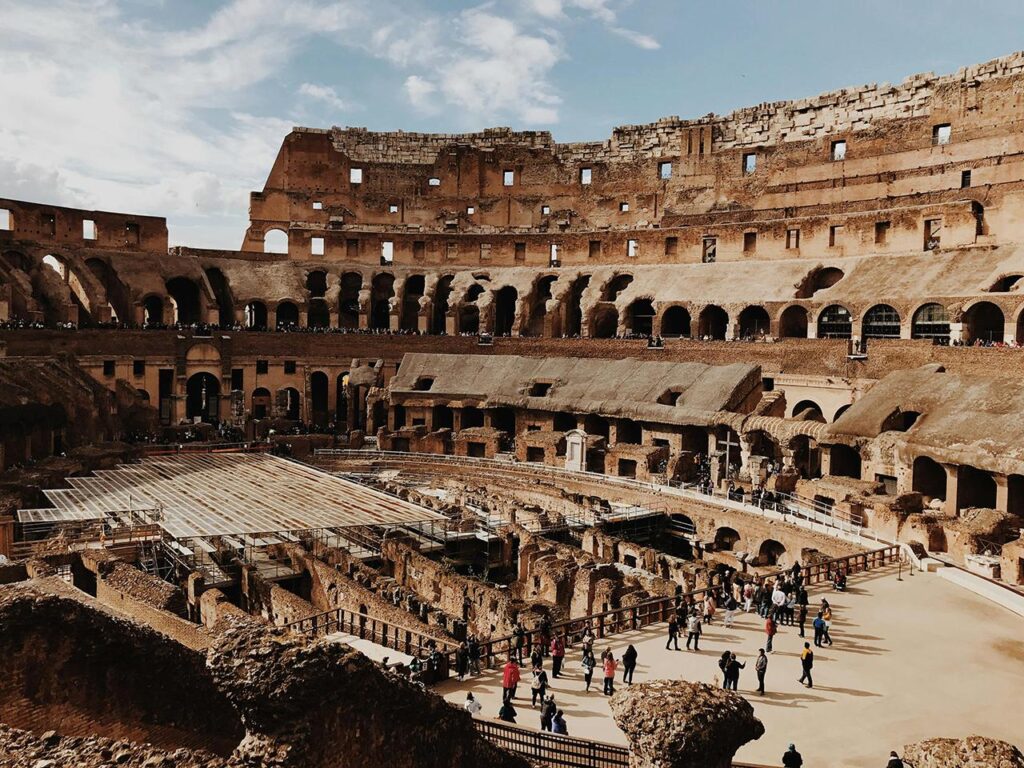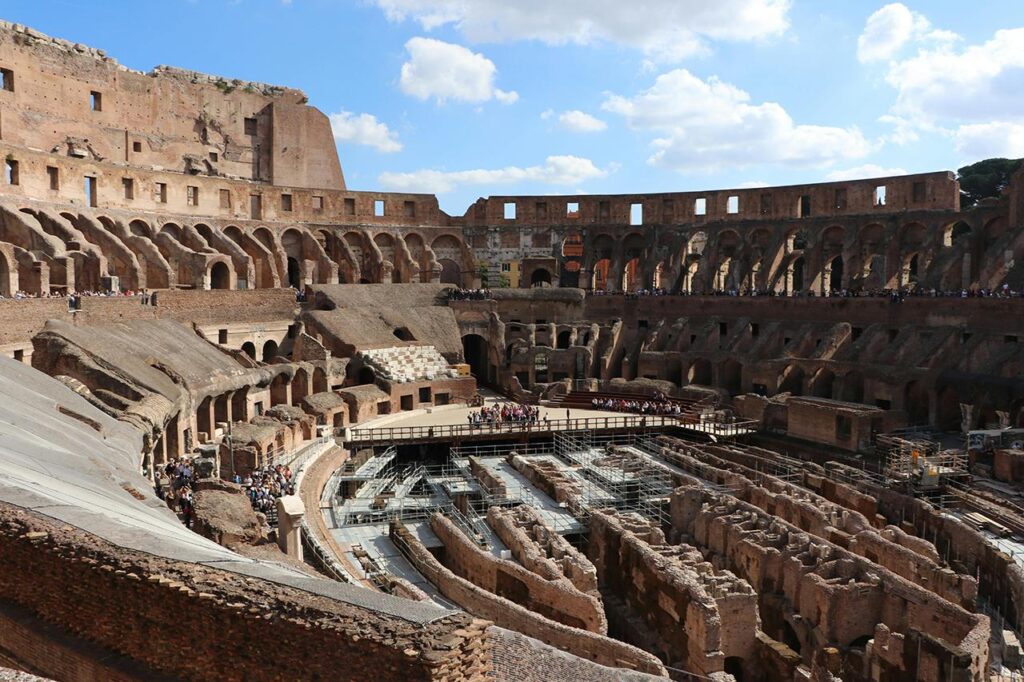
The Colosseum is an icon of the ancient world that has quite the story to tell. From the centerpiece of Roman entertainment as the venue for gladiatorial battles to its later decline and ruin, this is a landmark that has been on a journey. In recent times a great deal of effort has been made to restore the site to its former glory. Today, millions of visitors go on Colosseum’s tours of the restoration every year.
In this guide to the history of the Colosseum, we’ll be taking a closer look at how the site has changed over the centuries.
The purpose of modern Colosseum preservation efforts is always to give visitors a glimpse of what the site used to be like in its prime. Go back to 72 AD and Vespasian was in need of a grand project that would distract the public from growing unrest in the city. He commissioned the Colosseum and was the central figure in its overall design.
80,000 spectators would be able to enjoy unobstructed views of the arena floor as gladiators, slaves, actors, and even wild animals entered to provide entertainment. Multi-day games were commonplace, with Titus hosting a 100-day spectacle to celebrate the Colosseum’s grand opening.
The scale of the achievement becomes even more impressive when you consider the innovative nature of the arch and vault system used to build it. This combined with an intricate network of stairwells and hallways so that crowds of tens of thousands could exit the Colosseum in as little as 15 minutes.
Unfortunately for Rome, all good things come to an end.
The ancient Roman Colosseum may be admired the world over today, but that was not always the case. As the Roman Empire fell, so did the Colosseum. Grand games became a thing of the past and the Colosseum was used in a variety of different ways over the centuries:
Earthquakes in 1349 and 1703 would shatter several of the iconic arches, and with no one skilled in the art of repair, little was done to reinforce the structure. Fortunately for those of us alive today, this began to change during the 18th century.
Lovers of ancient history have much to thank Pope Benedict XIV for. In 1744 he issued an edict banning further destruction of the Colosseum. He followed this with a full papal consecration of the Colosseum in 1750.
Benedict believed that the Colosseum should be preserved to serve as a shrine to Christian martyrs. A series of 14 crosses were placed around the perimeter and the site was declared sacred.
It’s interesting to note that Christian martyrs may have been killed on the arena floor — this is something Benedict would have been unaware of as it is still a matter of debate among historians today.

From this early starting point, we now arrive at the accessible, protected version of the Colosseum that is alive today.
Today there is a wide range of Colosseum restoration projects that have helped preserve this truly unique landmark. Highlights include:
Each one of these pieces of work plays a part in preserving the Colosseum for generations to come.
Thanks to the historic conservation of the Colosseum, visitors from around the world can witness the Colosseum’s restoration firsthand. Guided tours provide unique insights into the architectural legacy and historical significance of the site as a whole while also showcasing the ongoing restoration efforts.
VIP tours allow visitors to walk onto the arena floor and explore the underground chambers while listening to the educated words of a skilled guide. This provides additional context and background information that truly does bring the Colosseum back to life.
Now that you have gone on a journey through Colosseum restoration history, it’s interesting to pause and think about what happens next. You may even find that you wish to donate to a project and play your own part in the next chapter of the Colosseum’s story.
Counter
101 Countries • 1432 Cities